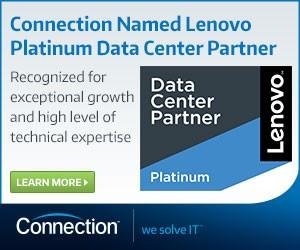Linux group pushes out production-ready blockchain collaboration software
Hyberledger Fabric 1.0 has been under development for 16 months

Credit: Thinkstock
The Linux Foundation's Hyperledger project announced today the availability of Fabric 1.0, a collaboration tool for building blockchain distributed ledger business networks such as smart contract technology.
The Hyperledger project, a collaborative cross-industry effort created to advance blockchain technology, said the Hyperledger Fabric framework can be a foundation for developing blockchain applications, products or customized business solutions

Under development for the past 16 months, Hyberledger Fabric 1.0 is ready to be used to create an immutable, secure electronic ledger in industries such as financial services for completing transactions, including clearance and settlement, and healthcare, as a way to validate where electronic patient records exist and who has access to them.
"Fabric 1.0 will help substantially in both those use cases," said Hyperledger's executive director, Brian Behlendorf.
C-Suite Role Is Evolving — What Do You Need to Succeed as Digital Investigators?
BrandPost Sponsored by AccessData
C-Suite Role Is Evolving — What Do You Need to Succeed as Digital Investigators?
Blockchains can be encrypted or unencrypted, depending on the level of security required, but in both cases the records are auditable because the data in the database cannot be changed and is tied to each authorized participant in the chain. A blockchain, for example, could be used during the clearance and settlement process between Wall Street traders and the banks that support the transactions to verify in real time when each party has received data and agreed to the exchange of funds.
Fabric 1.0 offers a modular architecture allowing components, such as consensus and membership services, to be plug-and-play. It leverages container technology to host smart contracts called "chaincode" that comprise the application logic of the system.
Fabric has been through several release cycles or pilots with 28 of Hyperledger's member organizations. The include The Depository Trust & Clearing Corp. (DTCC), Fujitsu, GE, Hitachi, Huawei Technologies, State Street Bank, SecureKey, IBM, SAP, and Wanda Group.
There were also contributions from 35 unaffiliated individuals. In total, 159 developers contributed to Hyperledger Fabric, Behlendorf said.
MORE LIKE THIS
Linux Foundation to develop tool for building blockchain business networks
Blockchain integration turns ERP into a collaboration platform
4 ways blockchain is the new business collaboration tool
VIDEO
Mingis on Tech: The alphabet soup of mobile device management
"We had to push this out and encourage companies to start using them in proof-of-concepts and pilots, and some even were happy with the data code at that time and pushed them into production," Behlendorf said.
"It creates a common transaction record, something that's very much on the mind of the financial services industry," he said. "How do we move from a model where your database ledger, my database ledger and someone else's needs to be reconciled and synchronized, which is why we have settlement times of three days? How do we move to a model of immediate settlement [through a] commonly shared, distributed ledger?"
For example, IBM, AIG and Standard Chartered Bank recently unveiled a Hyperledger Fabric pilot project to streamline one of the most complex types of policies in the insurance industry -- a multinational policy.
The three companies created a master policy written in the UK that includes three local insurance policies in the U.S., Singapore and Kenya, and made it a "smart contract" that provides a shared view of policy data and documentation in real-time.

computerworld
Search for
Go
Browsers
Cloud Computing
Computer Hardware
Consumerization of IT
Data Centers
Emerging Technology
IT Leadership
Internet
Mobile
Networking
Operating Systems
Security
Software
Vertical Industries
All Topics
News
Features
Reviews
Blogs
Opinions
Insider
Shark Tank
Slideshows
Video
Digital Magazine
Digital Downloads
Newsletters
Computerworld Events
Resources/White Papers
NEWS
Linux group pushes out production-ready blockchain collaboration software
Hyberledger Fabric 1.0 has been under development for 16 months
By Lucas Mearian
Senior Reporter, Computerworld
JUL 11, 2017 8:01 AM PT
blockchain ecosystem
Credit: Thinkstock
The Linux Foundation's Hyperledger project announced today the availability of Fabric 1.0, a collaboration tool for building blockchain distributed ledger business networks such as smart contract technology.
The Hyperledger project, a collaborative cross-industry effort created to advance blockchain technology, said the Hyperledger Fabric framework can be a foundation for developing blockchain applications, products or customized business solutions
Under development for the past 16 months, Hyberledger Fabric 1.0 is ready to be used to create an immutable, secure electronic ledger in industries such as financial services for completing transactions, including clearance and settlement, and healthcare, as a way to validate where electronic patient records exist and who has access to them.
"Fabric 1.0 will help substantially in both those use cases," said Hyperledger's executive director, Brian Behlendorf.
C-Suite Role Is Evolving — What Do You Need to Succeed as Digital Investigators?
BrandPost Sponsored by AccessData
C-Suite Role Is Evolving — What Do You Need to Succeed as Digital Investigators?
Blockchains can be encrypted or unencrypted, depending on the level of security required, but in both cases the records are auditable because the data in the database cannot be changed and is tied to each authorized participant in the chain. A blockchain, for example, could be used during the clearance and settlement process between Wall Street traders and the banks that support the transactions to verify in real time when each party has received data and agreed to the exchange of funds.
Fabric 1.0 offers a modular architecture allowing components, such as consensus and membership services, to be plug-and-play. It leverages container technology to host smart contracts called "chaincode" that comprise the application logic of the system.
Fabric has been through several release cycles or pilots with 28 of Hyperledger's member organizations. The include The Depository Trust & Clearing Corp. (DTCC), Fujitsu, GE, Hitachi, Huawei Technologies, State Street Bank, SecureKey, IBM, SAP, and Wanda Group.
There were also contributions from 35 unaffiliated individuals. In total, 159 developers contributed to Hyperledger Fabric, Behlendorf said.
MORE LIKE THIS
Linux Foundation to develop tool for building blockchain business networks
Blockchain integration turns ERP into a collaboration platform
4 ways blockchain is the new business collaboration tool
VIDEO
Mingis on Tech: The alphabet soup of mobile device management
"We had to push this out and encourage companies to start using them in proof-of-concepts and pilots, and some even were happy with the data code at that time and pushed them into production," Behlendorf said.
"It creates a common transaction record, something that's very much on the mind of the financial services industry," he said. "How do we move from a model where your database ledger, my database ledger and someone else's needs to be reconciled and synchronized, which is why we have settlement times of three days? How do we move to a model of immediate settlement [through a] commonly shared, distributed ledger?"
For example, IBM, AIG and Standard Chartered Bank recently unveiled a Hyperledger Fabric pilot project to streamline one of the most complex types of policies in the insurance industry -- a multinational policy.
The three companies created a master policy written in the UK that includes three local insurance policies in the U.S., Singapore and Kenya, and made it a "smart contract" that provides a shared view of policy data and documentation in real-time.
The solution is structured so that multiple parties in the network -- including brokers, regulators and auditors -- can collaborate more effectively and efficiently, according to IBM. The blockchain gives all of the parties a unified view of policy and payment data and documentation so that they can make informed business decisions based on a common set of trusted data.
"Our pilot proves blockchain has a powerful role to play in the future of insurance. Any technology -- including blockchain -- that can increase trust and transparency for an industry whose pillars are built on that, should be fully explored," Rob Schimek, CEO of AIG's Commercial division, said in a statement. "We're excited to be delivering innovation that matters to our clients and co-developing key components of this new technology together."

Other businesses have used blockchain in supply chains for its provenance-enabled tracking abilities, which can keep tabs on specific goods as they move from shippers to outlets.
For example, IBM and Maersk, the world's largest container shipping operator, recently announced they are piloting Hyperledger Fabric to help manage and track the paper trail of tens of millions of shipping containers across the world by digitizing the supply chain process from end-to-end. The goal: to enhance transparency and the highly secure sharing of information among trading partners.

A new blockchain solution from IBM and Maersk can manage and track the paper trail of tens of millions of shipping containers across the world by digitizing the supply chain process.
33% off iRobot Roomba 652 Robotic Vacuum Cleaner - Prime Day Deal Alert
35% off Bose SoundLink Mini Bluetooth Speaker II - Prime Day Deal Alert
43% off Caller-ID Call Blocker For Robo-calls, Telemarketers and Other...
When adopted at scale, the blockchain has the potential to save the industry billions of dollars, the two companies said.
As a peer-to-peer network, combined with a distributed time-stamping server, blockchain databases can be managed autonomously. There's no need for an administrator because the users are the administrator.
When used for smart contracts, blockchain first captures all terms and conditions between an organization and its customers, then uses data gleaned across distributed nodes or servers to determine when those conditions have been met and payment is authorized.
Blockchain eliminates huge amounts of recordkeeping, which can get confusing when there are multiple parties involved in a transaction, according to Saurabh Gupta, vice president of strategy at IT services company Genpact. "Blockchain and distributed ledgers may eventually be the method for integrating the entire commercial world's record keeping," he said.
Hyperledger, is a global, open source collaborative effort hosted by the Linux Foundation to advance cross-industry blockchain technologies.
Related Articles
Q&A: AppDynamics CIO sees SaaS as the future of mobile...
Free and cheap ways to learn about IT security
Free and cheap ways to boost your IT skills
See all Insider
Similar to public relational databases, blockchain can be a public or private electronic ledger that can be shared among disparate users and that creates an immutable record of their transactions, each one time-stamped and linked to the previous one.
Each digital record or transaction in the thread is called a block (hence the name), and allows either an open or controlled set of users to participate in the electronic ledger. Each block is linked to a specific participant.
A blockchain can only be updated by consensus between participants in the system, and when new data is entered, it can never be erased.
"After over a year of public collaboration, testing, and validation... Fabric 1.0 is a true milestone for our community," Behlendorf said. "Fabric can now advance to production deployment and operations. I look forward to seeing even more products and services being powered by Hyperledger Fabric in the next year and beyond."
Congratulations @aungphyothu! You have completed some achievement on Steemit and have been rewarded with new badge(s) :
Click on any badge to view your own Board of Honor on SteemitBoard.
For more information about SteemitBoard, click here
If you no longer want to receive notifications, reply to this comment with the word
STOP